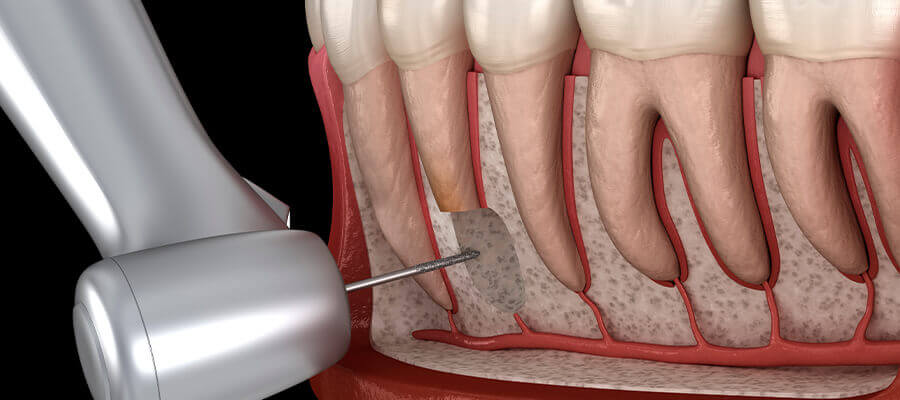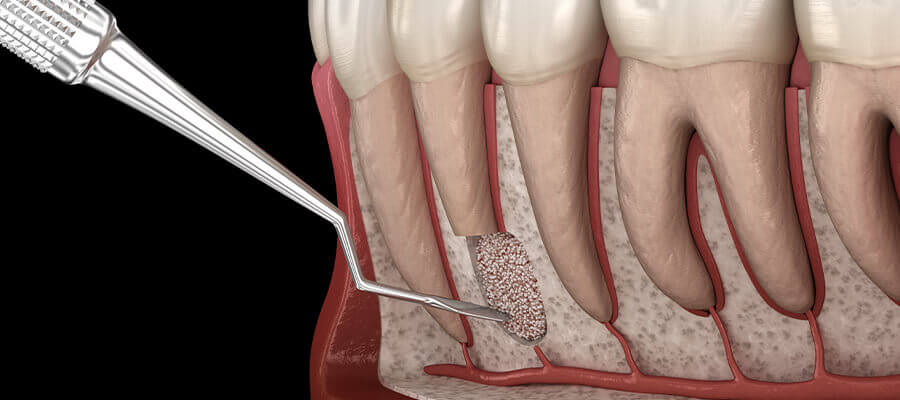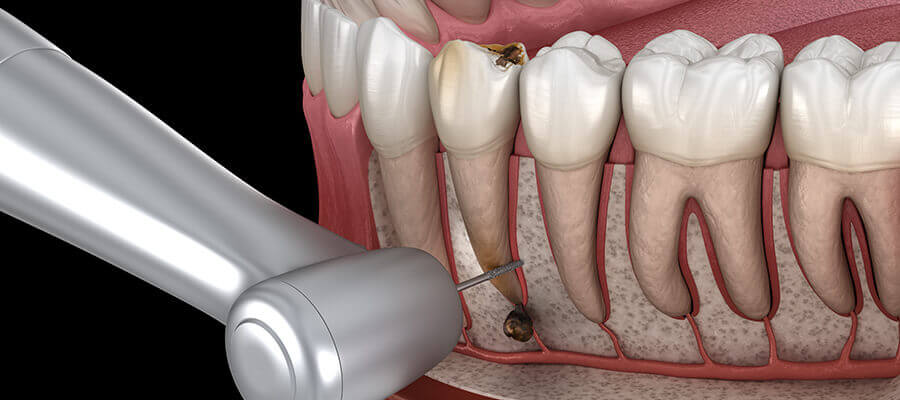The goal of root apex resection is to successfully save the tooth and avoid the need for extraction. During the oral surgical procedure, the inflamed tissues and the root apex are removed to allow for healing of the surrounding area. The treatment of chronic inflammation is done in two steps, as root canal treatment is always performed before root apex resection. This involves either performing root canal therapy or replacing an old root filling, followed by the removal of the root apex. Removal of the old root filling is necessary to prevent super infection.

When is root apex resection recommended?
Several factors can lead to a chronic inflammatory process around the tooth root. Tooth decay or injury can cause the nerve inside the tooth to die, leading to a bacterial infection. There is a small opening at the tip of the tooth root through which bacteria can enter the area around the root apex and the bone tissue, causing problems.

A properly performed root canal treatment usually provides an effective solution for issues caused by inflammation around the root apex. If the size of the inflammatory area does not decrease despite root canal treatment, then the need for resection arises. This procedure is mainly performed on incisors and premolars, meaning single- or double-rooted teeth. It is only rarely performed on molars.

The possible indications for root apex resection include
- Unsuccessful attempts at multiple root canal treatments.
- Persistent chronic inflammation after root canal treatment.
- Branched or strongly curved tooth roots or root constriction.
- Excessive restorative material around the tooth root.
- Failure of attempts to dry the tooth root.
- Removal of the root apex due to other oral surgical procedures.
- Fracture of the root apex third of the tooth.
- Presence of a root apex cyst.
- Development of an inflammatory focus around the tooth root, which can lead to hair loss, heart problems, or joint pain.
The process of root apex resection
This oral surgical “minor procedure” is usually performed under local anesthesia. The first step involves creating and detaching the gum flap from the bone surface, followed by drilling a bone window around the root apex.

Subsequently, a few millimeters are removed from the tip of the tooth root, and the inflamed tissues are cleaned through the bone window, which is then sutured.

Post-operative considerations
Like any oral surgical (or even other) procedure, following medical instructions is extremely important after root apex resection. The most common question is when one can eat and drink: fortunately, drinking is usually possible immediately, but eating is recommended only after the effects of anesthesia have worn off to prevent injuries. Consumption of hot, spicy, and acidic foods and drinks should be avoided during the initial healing period, as well as dairy products and carbonated beverages.

Potential facial swelling after root apex resection can be effectively reduced with ice application. We usually advise all our patients to pay special attention to maintaining oral hygiene, which includes using mouthwash containing chlorhexidine alongside regular brushing.

Due to the removal of the root portion, the tooth’s stability in the bone may slightly decrease. Thus, it’s important to avoid increased stress on the affected area, such as strong biting or chewing hard foods, for 4-6 weeks. The process of bone regeneration is monitored through follow-up visits; healing is indicated when the hole around the root apex disappears. Bone consolidation is typically assessed 6-9 months after resection using imaging diagnostics, followed by X-ray appointments every 3-6 months.
